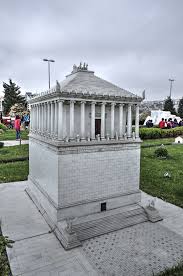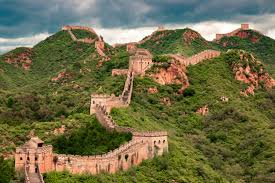Introduction
One of the seven wonders of the ancient world stood as a test for the mausoleum, architectural grandeur, original mastery and cultural synthesis of classical global. Built within the 4th century BC in Helicarnasus (current-day Bodrum, Turkish), this giant tomb is manufactured for a Persian vigilance, Mousolus, using its spouse and sister, Artemisia II. The word “mousolium” has seen that synonyms with any grand grave mean. Through centuries, the structure stimulated the fear with its grandeur and symmetry, mixing the Greek, Egypt and Lacian architectural styles in a prestigious Edifice,
Historical Background
The Age of Mausolus and Artemisia
Mausolus dominated Caria from 377 to 353 BCE as a satrap underneath the Achaemenid Empire. Caria turned into a area in southwestern Anatolia, influenced by means of each Persian and Greek cultures. Mausolus moved the desired from Mylasa to Halicarnassus, a port municipality with robust Greek affects, where he embarked on several could-be towers tasks.
Artemisia II, Mausolus’s sister and wife (a international exercise in royal families to hold the bloodline), succeeded him without his loss of life and vicarious the construction of the Mausoleum to honor him. The mission reflected no longer simply devotion but a desire to predicate cultural and political dominance.
The Municipality of Halicarnassus
Halicarnassus changed into as soon as a flourishing municipality with an excellent layout, municipality partitions, and a theater. The Mausoleum become part of a broader city ornamentation that pondered Persian wealth and Greek artistry. Located close to the metropolis’s middle, the tomb unnoticed the harbor, making it visible to ships getting back from wideness the Mediterranean.
Architecture and Design
Architects and Sculptors
The Mausoleum become designed by using the Greek architects Satyros and Pythius of Priene. The construction hired the talents of some of the most renowned sculptors of the classical period:
- Scopas of Paros, who labored on the east side.
- Bryaxis, accountable for the north aspect.
- Leochares, sculptor of the west aspect.
- Timotheus, who worked on the south side.
Each facet of the Mausoleum turned into ornate with sculptural reliefs and statuary, ensuring the monument’s ornamental richness from each attitude.
Dimensions and Materials
According to warmed-over sources like Pliny the Elder, the Mausoleum measured approximately:
- Height: 45 meters (148 feet).
- Base: 33 meters with the aid of 39 meters (108 by way of 126 ft).
- It was built atop a large stone platform, with a rectangular shape. The materials used blanketed:
- White marble from neighborhood quarries.
- Limestone and wood for foundational assist.
Structural Layout
The Mausoleum had 3 primary levels:
The Podium – A wholesale wiring with a stairway main up, probable ornate with sculptures and sphinxes.
The Colonnade – A series of 36 Ionic columns surrounded the middle, forming an unshut peristyle that supported the roof.
The Pyramid – A stepped, pyramid-fashioned roof with 24 levels, which tapered to the top.
The Chariot Group – Atop the pyramid became a grand quadriga (four-horse chariot) statue, proposing Mausolus and Artemisia within the chariot.
Artistic features
Sculpture relief
The tomb was distinguished for its problematic Fras, depicting mythological and ancient scenes. Some topics covered:
- Amazonomachi – Battle between Greeks and Amazon.
- Centauromachy – Conflict between centauars and lapiths.
- Greek warriors and Persian squads, symbolizes pre-west dicotomy.
Statues of Mousolus and Artemisia
The remains located had large-life statues of Mousolus and Artemisia. Mousolus is depicted with a commanding appearance, strong functions and Regal costumes. These idols reflect both the traditional ideal and realistic styles of the length of the classical Greek of the past.
The Quadriga
Fourth Perhaps the most prestigious element of the mausoleum was a fourth statue above the pyramid. Carved with marble, this chariot organization symbolizes power and divine climb, which connects the dead ruler with the gods.
Construction and Engineering Challenges
Constructing the Mausoleum required sophisticated engineering and architectural making plans. The demanding situations included:
- Foundation balance in an earthquake-susceptible region.
- Transporting and scarification huge marble blocks.
- Coordination among artists and designers running on variegated parts simultaneously.
The Mausoleum’s Significance
Political Symbol
The Mausoleum turned into a declaration of Carian identification and independence within the Persian Empire. Though Mausolus served below Persian rule, his tomb contemplated Greek aesthetics, reinforcing a dual background.
Cultural Legacy
The Mausoleum helped set standards for royal tombs wideness cultures. It changed into worshiped within the Hellenistic global and stimulated Roman tombs, Islamic mausoleums, and aircraft Renaissance memorials.
Linguistic Legacy
The very phrase “mausoleum” comes from Mausolus’s name, indicating the shape’s global and timeless impact. Today, any large and stately tomb is frequently tabbed a mausoleum.
Destruction of tomb
Earthquake and neglect
The mausoleums remained intact for centuries, worshiping Roman visitors and referred to in medieval texts. However, starting from the twelfth century, the earthquake gradually reduced the shape to the debris. The final marble blocks were dirty to other structures. St. John’s knight In the 15th century.
The knights of St. John
of Rhodes, who captured Bodram, used ruins to beef to Bodrum Castle. Many stones from the mausoleum were rebuilt in the palace walls, while some sculptures have been preserved and transported.
Current condition
Today, the simplest principle and scattered pieces remain on the authentic web page. Within the nineteenth century, Charles Thomas Newton recovered a large extent and recovered sculptures and reliefs displayed inside the British Museum in London.
Excavations and Modern Discoveries
Charles Newton’s Expedition
In the mid-19th century, Newton led British efforts to locate and excavate the Mausoleum. By negotiating with the Ottoman Empire, Newton turned into granted excavation rights and exposed:
- Foundation partitions.
- Sections of the friezes.
- The statues of Mausolus and Artemisia.
- Fragments of the chariot.
Display within the British Museum
Many of the sculptures and architectural remnants are displayed within the Halicarnassus Room at the British Museum. These pieces encompass:
- Horse statues from the quadriga.
- Relief panels.
- Ionic columns
Influence and Legacy
Influence on Western Architecture
The Mausoleum inspired architectural designs in later intervals, expressly within the West:
- Taj Mahal in India, a mausoleum for Mumtaz Mahal.
- Grant’s Tomb within the United States.
- Lenin’s Mausoleum in Russia.
Each borrowed factors of grandeur, symmetry, and symbolic positioning from the unique.
Cultural Symbolism
The Mausoleum became a image of:
- Enduring love and devotion, as shown by means of Artemisia’s tribute to Mausolus.
- Fusion of East and West, showcasing Greek philosophy under Persian rule.
- Human aspiration for immortality, thru enormous architecture.
Comparison with different miracles
The mausoleums become one of the seven wonders inside the historical world, which covered it:
- Great Pyramid of Giza
- Babylon’s placing garden
- Zeus statue in Olympia
- Artemis temple in Ephesus
- Kolosus of Rhodes
Alexandria’s mild
While the incredible pyramid still stands, the significance of the mausoleum lies in its artistry instead of the sheer scale. Unlike the temple of Artemis or Kolosus, which become also destroyed, the mausoleum left past due original pieces that later tightly affected artwork and structure
Mausolus and Artemisia in Myth and Legend
Artemisia’s grief became legendary. According to warmed-over sources, she was so heartbroken that she mixed Mausolus’s carrion with water and drank them every day. Though likely apocryphal, the story reflects the depth of her devotion and unsalaried to the monument’s romantic legacy.
Conservation and Future Prospects
Site Preservation
Today, the authentic website online is managed by means of Turkish archaeological authorities. Visitors can see:
- The Mausoleum’s foundations.
- Interpretive signs and symptoms.
- Nearby bodrum Castle in which many stones were reused.
Efforts are underway to digitally reconstruct the Mausoleum the use of 3D fashions and augmented reality assisting pupils and tourists visualize its former glory.
Ethical Debate on Art Repatriation
There is ongoing debate regarding whether or not the British Museum must go back the Mausoleum sculptures to Turkey. Similar to the Parthenon Marbles, the upstanding query centers on cultural background and colonial-era acquisitions.
Conclusion
The Mausoleum at Halicarnassus was more and more than just a tomb; it turned into a triumph of cultural fusion, an souvenir of royal grandeur, and a masterpiece of warmed-over artwork. Built through a grieving spouse to immortalize her husband, it has wrapped imaginations for over two millennia. Though ravaged by way of time and earthquakes, its legacy endures in art, structure, and aircraft language.
The Role of Caria in the Warmed-over World
To absolutely apprehend the importance of the Mausoleum at Halicarnassus, it’s essential to remember the role of Caria within the geopolitical dynamics of the warmed-over Mediterranean. Located in southwestern Anatolia, Caria served as a essential link among the Greek world and the Persian Empire.
Though technically below Persian manage, Caria operated with giant autonomy underneath nearby dynasts like Mausolus. These rulers unexplored Persian legalistic rules whilst embracing Hellenic cultural factors, including language, structure, and sculpture. Mausolus himself became educated in Greek traditions and used monumental tracery to speak each Persian validity and Greek cultural sophistication.
Artemisia : Beyond Mourning
While the famous legend emphasizes Artemisia II’s profound mourning for her husband-brother Mausolus, she became a great deal increasingly than a grieving widow. Artemisia become an workaday ruler, army commander, and patron of the humanities.
- After Mausolus’s demise in 353 BCE, Artemisia reigned for 2 years. During this time:
- She suppressed revolts and maintained Caria’s stability.
- She vicarious the Mausoleum, sparing no cost in its diamond and creation.
- She held artwork and tracery competitions, drawing expertise from wideness the Greek international.
- She probable oversaw the mission’s execution in my opinion, making sure that it met the upper requirements she expected.


